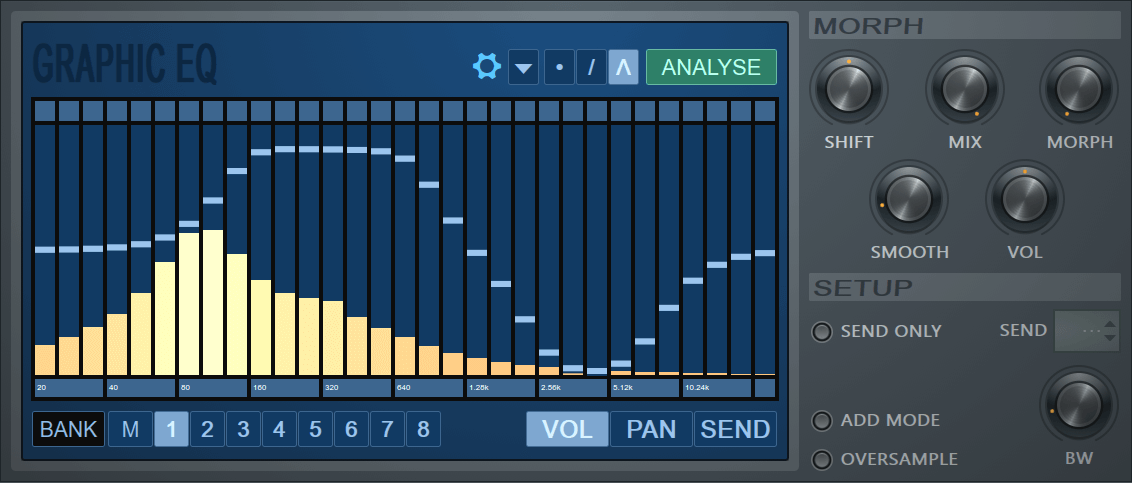
How you slot the frequencies of various instruments together in the mix varies massively depending on what you want to achieve, what genre is it? how do you want that instrument to sound? happy and energetic or slow and dramatic?īandpass EQ specifically affects mid-range frequencies rather than the highs or lows.īandpass EQ is most often used in a live setting.

Or maybe you want to create a dramatic loud section in a song and actually combining frequencies over a number of tracks may be desirable. This is of separating tracks from one another and allowing them to all stand out appropriately and not get lost in a muddy mess.

It is recommended that where possible parametric EQ is simply used to cut unwanted frequencies and not to boost ones that you like.Īs well as getting rid of those unwanted frequencies, parametric EQ is also very useful in ‘carving out’ frequencies in a mix. Or often with many instruments such as drums, annoying hums or buzzes can creep in, but if you can locate the frequency where that annoying sound occurs you can get rid of it. Sometimes on a vocal track, you will get some unwanted frequencies coming through that may not sound immediately obvious, but will make a massive difference if cut slightly. By being able to control very narrow frequency ranges you can cut or boost very specific parts of a track for various reasons. The temptation of a beginner may be to turn up that track and try and force it to the front of the mix but that probably won’t work, it’s not that simple.Īs I say parametric EQ is probably the EQ type you will end up using the most. This will result in certain elements or sounds getting lost. These various instruments are all fighting it out to stand out in the mix and often they are trying to do so in the same frequencies. Some even in ranges outside of the human range of hearing. In your mix, you will have sounds coming in on various tracks at all sorts of frequencies. But in the home recording studio, probably using digital EQ in your DAW you have many more options when it comes to EQ allowing you to boost or reduce certain frequencies or ranges of frequencies on individual tracks.

These are very simple forms of EQ and cut out either all the high or low frequencies of the sound. You may be familiar with bass and treble controls on your HI-FI for example.

With 20Hz being the lowest sound and 20,000 being the highest. Frequencies tend to be broadly grouped into categories that may sound familiar to you, either high, mids and lows or treble, mid-range and bass. Put simply equalization (from a music production point of view) is the process of altering sound frequencies to enhance your overall mix.įrequencies in a song will range between around 20 and more than 20,000 Hertz (Hz). In summary, the 5 main different types of EQ are:


 0 kommentar(er)
0 kommentar(er)
